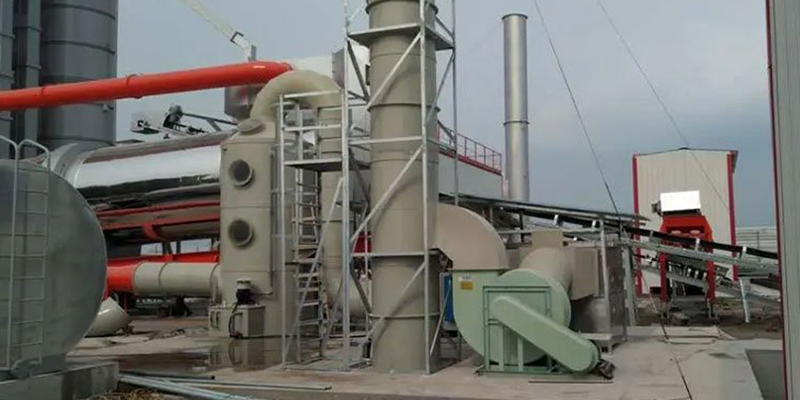Gas cleaning technology plays a crucial role in promoting environmental sustainability and operational efficiency across diverse industries. This encompasses a broad array of methods and processes aimed at eliminating contaminants and pollutants from industrial gases, thereby reducing their detrimental environmental effects.
Overall, gas cleaning technology plays a vital role in promoting cleaner air, protecting public health, and supporting sustainable industrial practices. As industries continue to seek ways to minimize their environmental footprint, the continued advancement and adoption of gas cleaning technology will remain essential in achieving these objectives.
One of the primary objectives of gas cleaning technology is to control air pollution by capturing harmful emissions before they are released into the atmosphere. This is achieved through the use of various gas scrubbing, absorption, adsorption, and filtration techniques. These methods target specific pollutants such as particulate matter, sulfur dioxide, nitrogen oxides, volatile organic compounds, and heavy metals, among others.
The choice of gas cleaning technology relies on multiple factors including the type and concentration of pollutants, gas flow rates, temperature, pressure, and spatial limitations. Furthermore, aspects like energy efficiency, operational expenses, and adherence to regulations are pivotal in devising and deploying gas cleaning systems.
Some of the key procedures involved in gas cleaning technology include:
Gas Scrubbing
Gas scrubbing is a fundamental process within gas cleaning technology aimed at removing contaminants and pollutants from industrial gases. Gas scrubbers use liquid solutions or sorbents to chemically react with pollutants in the gas stream. This reaction converts the contaminants into less harmful substances or captures them for disposal. The gas scrubbing process typically involves passing the contaminated gas through a scrubber vessel, where it comes into contact with the scrubbing solution. This solution may contain various chemicals or solvents tailored to target specific pollutants. Scrubbers are effective in removing acidic gases such as sulfur dioxide (SO2) and hydrogen sulfide (H2S), as well as certain volatile organic compounds (VOCs).
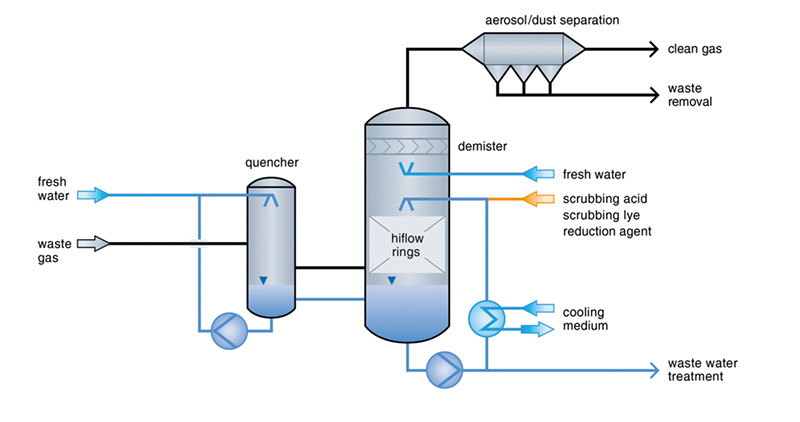
Absorption
Absorption involves the transfer of pollutants from the gas phase to a liquid solvent. This process relies on the solubility of contaminants in the solvent. Commonly used absorbents include water, alkaline solutions, and amine-based compounds. The absorption process typically involves passing the contaminated gas through a contactor or absorber vessel containing the solvent. As the gas comes into contact with the solvent, the pollutants dissolve or react chemically, leading to their transfer from the gas phase to the liquid phase. The cleaned gas exits the absorber, while the solvent, now containing the captured pollutants, is collected for further treatment or disposal. Absorption is effective for removing acidic gases, such as carbon dioxide (CO2) and hydrogen chloride (HCl), as well as ammonia (NH3) and some VOCs.
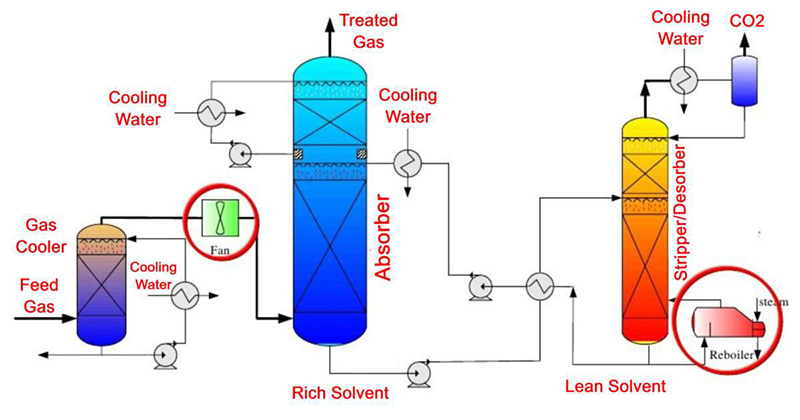
Adsorption
Adsorption techniques involve the attachment of pollutants to solid surfaces or adsorbents. Adsorbents such as activated carbon, zeolites, and silica gel have high surface areas and can effectively capture a wide range of contaminants through physical or chemical interactions. The adsorption process typically involves passing the contaminated gas through a bed or vessel packed with the adsorbent material. As the gas comes into contact with the adsorbent, the pollutants adhere to its surface through physical or chemical interactions, effectively separating them from the gas phase. The cleaned gas exits the adsorber, while the adsorbent, now containing the captured pollutants, is regenerated or replaced as needed. Adsorption is particularly useful for removing volatile organic compounds (VOCs), odors, and trace contaminants.
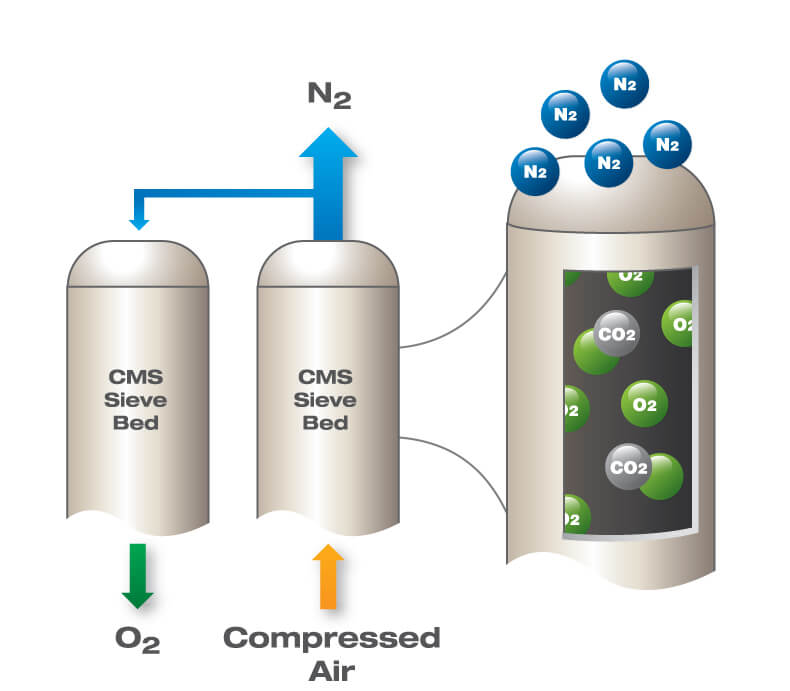
Filtration
Filtration methods physically separate particulate matter from the gas stream using barriers or porous materials. Filters may consist of fibrous media, membranes, or granular materials with specific pore sizes tailored to capture particles of varying sizes. Filtration is commonly used to remove dust, ash, soot, and other solid particles from industrial gases.
Different types of filtration processes, such as bag filters and cartridge filters are used depending on the specific requirements of the application and the characteristics of the particulate matter being targeted.
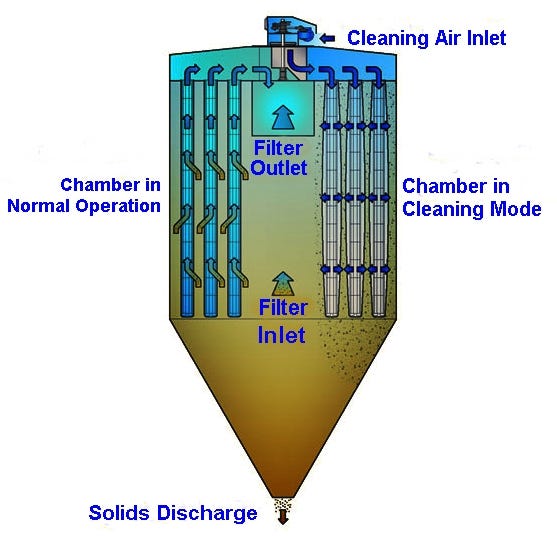
Catalytic Conversion
Catalytic converters employ catalysts to promote chemical reactions that convert harmful pollutants into less harmful or inert substances. In this process, a catalyst is employed to facilitate chemical reactions that convert pollutants present in the gas stream into less detrimental compounds.
For example, catalytic oxidation can convert volatile organic compounds (VOCs) and carbon monoxide (CO) into carbon dioxide (CO2) and water vapor. Catalytic converters are often used in exhaust gas cleaning systems for vehicles and industrial processes.
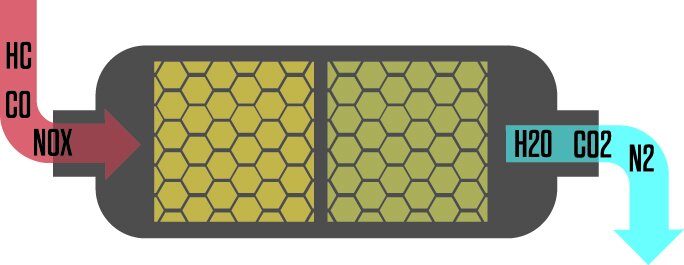
Electrostatic Precipitation
Electrostatic precipitators (ESP) use electrostatic forces to charge and collect particulate matter suspended in the gas stream. The electrostatic precipitation process typically involves passing the contaminated gas through an electrostatic precipitator (ESP), which consists of a series of charged plates or electrodes. As the gas flows through the precipitator, the particles become charged either by corona discharge or by contact with charged surfaces. These charged particles are then attracted to the oppositely charged collection plates or electrodes, where they deposit and accumulate. ESPs are effective for capturing fine particles and aerosols, including fly ash from power plants and fumes from metal smelting operations.

These procedures can be employed individually or in combination, depending on the specific contaminants present in the gas stream and the desired level of emission control.

